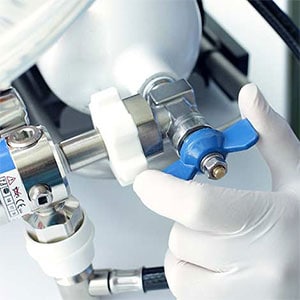Control Control for Compressed Gas
Compressed air is often a vital utility in the process of making aseptic pharmacy, especially in the environment where it is in contact with the final product. To ensure product integrity, it is important to control the cleanliness of the compressed gas system. This article describes important guidelines for maintaining the purity and quality of compressed gas, focusing on contaminants, monitoring, and preventive maintenance.
The source of compressed gas contaminants
Before building a compressed air system, it is important to consider the materials used in construction, subsystem functions, and design parameters. Identifying potential contaminants is the key to determining the compressed air purity class. The main threats to air quality in compressed gas systems include:
- Particle
- Water
- Total oil
This contaminant must be maintained within the limits of regulations. For example, the FDA mandates that the purity of compressed gas must meet or exceed the cleanliness of the surrounding environment, while the GMP 1 UE attachment requires specific quality parameters.
System design and purity guarantee
During the compressed air system qualification phase, the quality of installation must be confirmed. This involves regulating the limit for the number of particles, the concentration of microbes, humidity, and total oil. The sampling point located and accessible is very important for sustainable quality control. These points must be strategically identified through risk analysis to prevent cross contamination.
The frequency of monitoring compressed gas contamination
Routine monitoring of compressed air systems is very important. Monitoring frequency must be determined based on risk analysis, ensuring contaminants are detected before affecting product quality. Regular examination and trend analysis can help adjust the frequency of monitoring from time to time.
Compressed gas sampling method
According to ISO 8573, there are various methods of taking full or partial flow (isokinetics) to measure contaminants.
All equipment used for sampling must be clean and made of appropriate materials, such as stainless steel, to avoid introducing new contaminants.
Microbial contamination
Although rare, microbial contamination can occur in a compressed gas system. Regular microbiological sampling helps ensure that the source of potential contamination is identified and reduced.
How the particle measurement system can help
At the Particle Measuring Systems (PMS), we offer comprehensive support throughout the life cycle of compressed gas systems, from installation to monitoring. Our services include:
- System Qualification: Verify cleanliness and free from contaminants.
- Risk Analysis: Identify potential contaminants and establish monitoring plans.
- Sampling equipment: Utilizing tools such as Minicapt® Mobile Air Sampler and HPD ™ high pressure diffuser for effective contamination control. That Minicapt® Mobile Air Sampler allows proper measurement of microbiological, whereas HPD ™ offers direct solutions to control particle contamination.
Want to read more? Jump to other posts released in this series:
The Importance of Compressed Gas Risk Assessment in Pharmaceutical Manufacturing
or
Read the paper, compressed gas risk assessment: Significant steps in your CCS.
football News
News
Berita
News Flash
Blog
Technology
Sports
Sport
Football
Tips
Finance
Berita Terkini
Berita Terbaru
Berita Kekinian
News
Berita Terkini
Olahraga
Pasang Internet Myrepublic
Jasa Import China
Jasa Import Door to Door



